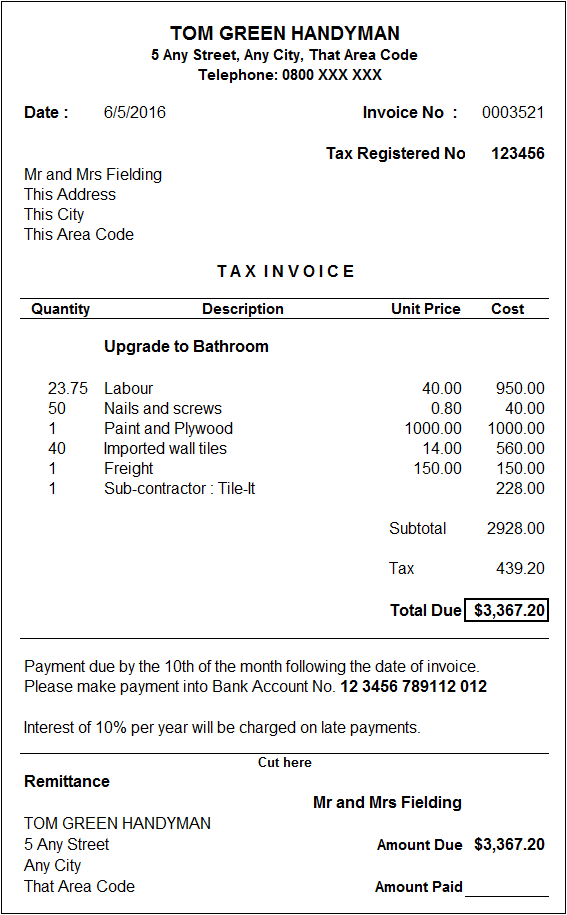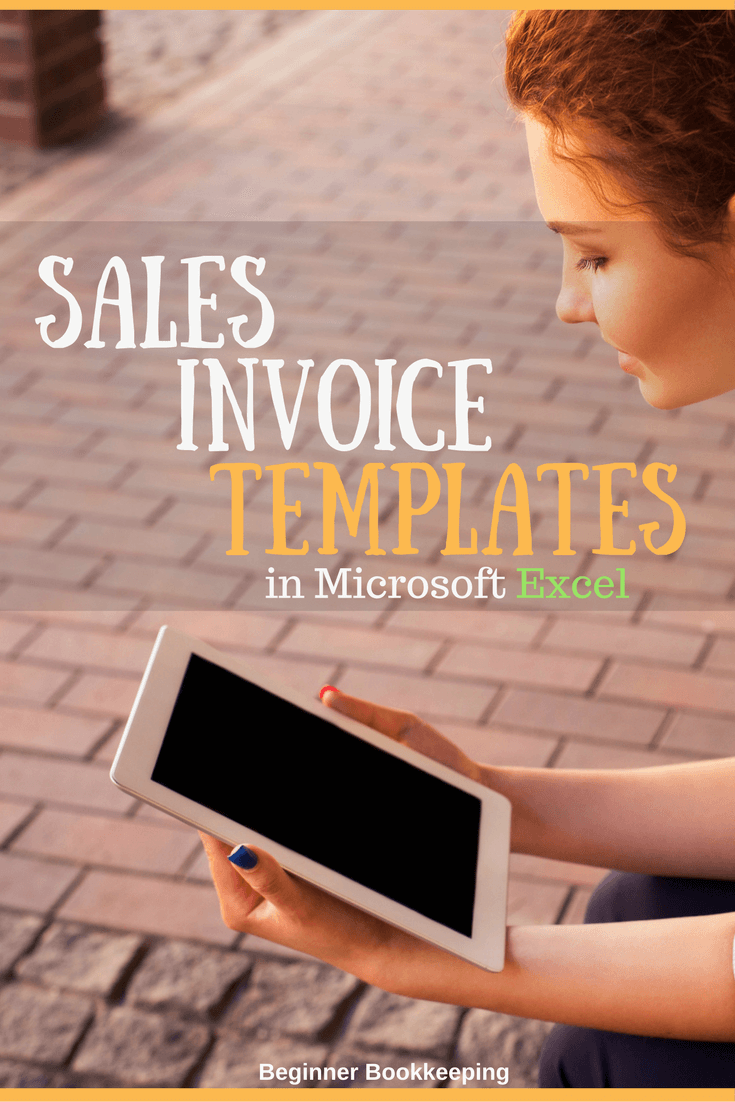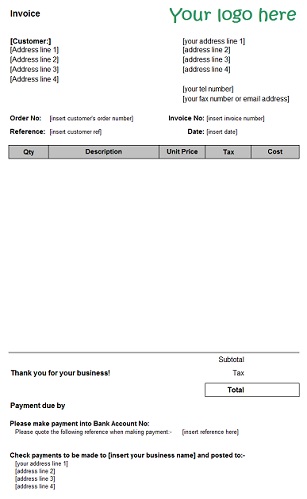- Home
- Excel Bookkeeping Templates
- Sales Invoice Template
Free Sales Invoice Template
create your own invoice
A sales invoice template is an outline document into which is added
information relevant to each and every sale you make to a customer.
A sales invoice template is available from the following resources:-
- A pre-printed duplicate invoice book available from stationery suppliers;
- A sales invoice template within your favorite spreadsheet program such as Excel;
- Bookkeeping computer software that has the capability of producing invoices.
download sales invoice template
There are two versions, a basic one in PDF and one in Excel, both free.
What's On a Sales Invoice?
The outline of the sales invoice template will include unchangeable information like:-
- Your business name, address and logo
- Your business sales tax number if applicable
- The words ‘Date’ and ‘Invoice No.’
- Column headings, etc.
- Your payment terms
- If you want payment directly into your bank account, then display the account number
- Your interest charge per year for overdue payments
- A remittance slip (optional)
Hint - always use the decimal point and cents units. Example, $5.00 is better than $5. This avoids any doubt about the full cost.
You probably receive sales invoices, also called bills, all the time. Study one and take note of what information is on it.
What details from a sale should an invoice include?

The Top
- The customer’s name and address.
- An invoice number. Start with something like 4001 or 0002510 rather than number 1 which is too basic.
- The date of the sale. If you deliver a product and only prepare the invoice several days later, use the date you prepare the invoice. On the invoice you could indicate the delivery date and docket number in the Description column. (It’s always a good practice to issue delivery dockets if the invoice is only going to be posted out at a later date).
- The customer purchase order number if they have given you one.
The Middle
Columns headed:-
- Quantity (optional)
- Description
- Unit Price (optional)
- Discount (optional)
- Cost
The above optional items are optional because you could put a one-line detail into the ‘Description’ column. For example - ‘3 x hats @ $5.00 each’ with the total of $15.00 in the ‘Cost’ column. It looks more professional to use all the columns so it depends on your situation.
Many businesses provide both service and parts in the same job (like a plumber spending time fixing a sink - the service, and providing the replacement parts - the items). These can both be included on the same invoice.
The Bottom
- A subtotal below the ‘Cost’ column (optional)
- A tax amount (optional)
- The total due
- Your early payment discount terms if you provide them
- Your payment terms should indicate whether you want cash on delivery, or payment within 7 days or by the end of the month following the date of invoice, etc.
Hint: Sales are coded to the Income account in your Chart of Accounts. You can break it down to two - Service Income and Parts Income
The Remittance Slip
This is a bit of paper the customer can return to you with their payment so that you know who it’s from and what sales invoice it is for.
The remittance should show:-
- The customer name
- The sales invoice number
- The amount due
- A blank line onto which they can write how much they are paying (if they are not paying the whole amount).
Discounts
Early Payment Discounts
You could offer an early payment discount of say 10% as an incentive for the customer to pay cash before receiving delivery, or to pay by the due date if you extend credit. Just be sure you can afford the discount. Does your markup cover it?
Most people love to know they can pay less than they have to. If a discount encourages them to pay on time at least you are getting the money in and not wasting energy, time and money on chasing overdue payments.
Bulk Discounts
You can also offer a discount to customers who buy in bulk. Here again you need to decide what your limits are. A customer buying 100 hats could well deserve a discount of 20% as long as your original markup per hat still allows you some profit after this discount.
In the USA, discounts are usually not an expense to your business but are rather a reduction in sales i.e. gross sales minus sales discounts equals net sales. You can open a Sales Discount income account on your Chart of Accounts.
In places like the UK or New Zealand, a sales discount is often recorded as an expense.
So you need to research what bookkeepers normally do in your country for sales discounts also known as discounts allowed.
Credit Note
A Credit Note is usually produced to reduce the total of an invoice in the following scenarios:-
- An error has occurred such as an overcharge.
- A customer complains about the product and you decide to give them a discount.
- To ‘cancel’ out a sales invoice when an unsatisfied customer returns a product.
You can use the exact same layout as your sales invoice template replacing the words ‘Tax Invoice’ with ‘Credit Note’ and put a negative sign next to the value (like this -$5.00).
In the description column be sure to indicate which sales invoice the credit note is amending. Keep the description short and sweet; if you want to keep lots of detail put it on a separate sheet of paper to file away with the copy of the credit note.
Post out to the client as you would a sales invoice.




